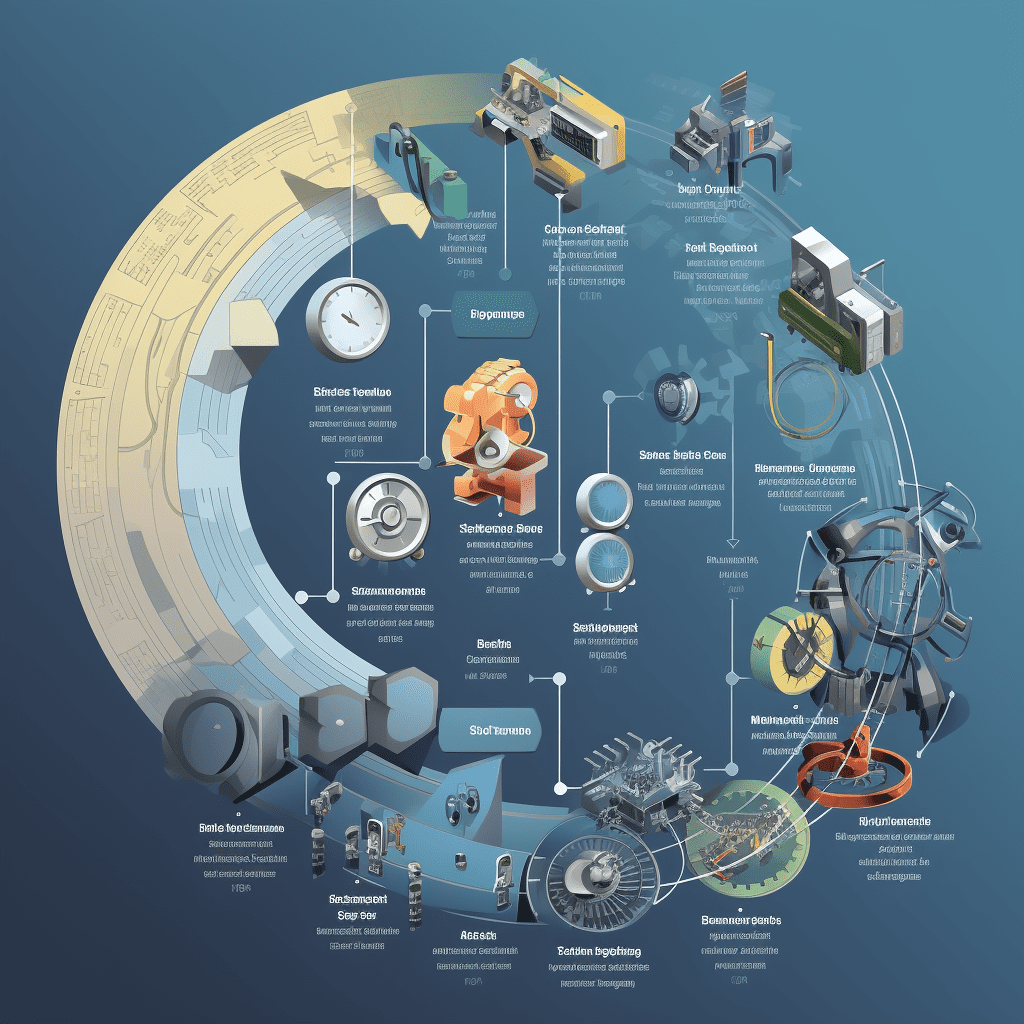Construction Technology: Transforming the Building Industry
In today’s fast-paced world, advancements in technology are revolutionizing industries across the board. One such field that’s experiencing significant transformation is construction. Construction technology, also known as construction tech, encompasses the adoption and application of innovative tools, techniques, and processes to improve productivity, efficiency, and safety in building projects. This blog post will explore the various aspects of construction technology, the advantages it offers, and its impact on the construction industry.
The Evolution of Construction Technology
Construction technology has come a long way since the early days of manual labor and simple tools. The introduction of machinery in the industrial revolution paved the way for significant advancements in the construction industry. Today, modern construction technology incorporates sophisticated tools, equipment, and software that streamline processes and enable more precise and accurate construction practices.
Key Innovations in Construction Technology
The construction industry has witnessed several key innovations that have revolutionized the way projects are planned, designed, and executed. Some notable advancements include:
1. Building Information Modeling (BIM)
Building Information Modeling, or BIM, is a digital representation of a building’s physical and functional characteristics. It allows architects, engineers, and construction professionals to collaboratively create and manage 3D models, data, and information throughout the building’s lifecycle. BIM facilitates better coordination, reduces errors, and enhances efficiency in construction projects.
2. Drones
Unmanned aerial vehicles, commonly known as drones, are increasingly being used in the construction industry. Drones equipped with high-resolution cameras and sensors allow construction professionals to capture detailed aerial images and collect data for surveying, inspections, and project monitoring. Drones save time, improve accuracy, and enhance safety on construction sites.
3. Robotics and Automation
The integration of robotics and automation in construction processes has significantly improved productivity and safety. Robotic arms, autonomous vehicles, and 3D printing are just a few examples of how technology is being used to automate tasks traditionally performed by manual labor. Robotic systems speed up construction, reduce costs, and minimize risks associated with hazardous tasks.
4. Augmented Reality (AR) and Virtual Reality (VR)
AR and VR technologies are transforming the way construction projects are visualized and executed. By overlaying virtual elements onto the real world or simulating immersive environments, AR and VR enable stakeholders to experience and interact with construction designs before they are built. This technology helps in design validation, reducing errors, and improving communication and collaboration among project teams.
5. Internet of Things (IoT)
The Internet of Things has found its way into construction, connecting physical devices and equipment to the internet and enabling data exchange and remote monitoring. IoT in construction allows for real-time tracking and monitoring of assets, equipment maintenance, and improved safety protocols. By facilitating data-driven decision-making, IoT enhances the overall efficiency and productivity of construction projects.
6. Sustainable Construction Practices
Construction technology has also contributed to the adoption of sustainable practices in the industry. From energy-efficient materials and smart systems to renewable energy integration and waste reduction, innovative technologies are helping in creating environmentally-friendly buildings. These sustainable practices not only reduce the ecological footprint of construction projects but also result in long-term cost savings for building owners.
The Benefits of Construction Technology
Adopting construction technology comes with numerous benefits for both construction professionals and clients alike:
- Improved project planning and scheduling
- Enhanced collaboration and communication among stakeholders
- Increased productivity and efficiency
- Improved quality control and reduced errors
- Enhanced safety on construction sites
- Cost savings through optimized resource allocation
- Faster project delivery and reduced construction timelines
- Sustainable and environmentally-friendly practices
Frequently Asked Questions
Q: Is construction technology only applicable to large-scale projects?
A: No, construction technology can be applied to projects of various scales, from small residential buildings to large-scale infrastructure projects. The benefits of construction technology are accessible to projects of all sizes.
Q: Are traditional construction methods becoming obsolete with the adoption of construction technology?
A: While construction technology is transforming the industry, traditional methods still play a role, particularly in certain contexts and for specific project requirements. Construction technology enhances traditional methods by offering tools and techniques that optimize processes, improve safety, and increase efficiency.
Q: How can construction technology improve safety on construction sites?
A: Construction technology introduces automation, robotics, and IoT devices that can perform hazardous tasks, reducing the risk to human workers. Additionally, technologies like BIM and AR/VR allow for better planning and visualization, minimizing potential safety hazards and facilitating proactive safety measures.
Q: Does the adoption of construction technology lead to job losses?
A: While automation may replace some manual labor tasks, construction technology also creates new job opportunities. The industry requires skilled professionals to operate and manage the emerging technologies, ensuring their effective implementation and maximizing the benefits they offer.
Q: Is construction technology cost-effective for smaller construction companies?
A: Construction technology can provide cost savings through improved efficiency, reduced rework, and optimized resource allocation. The upfront investment in technology may vary depending on the specific requirements, but over time, it can result in long-term cost savings, making it accessible and beneficial for smaller construction companies.
Q: How can one get started with adopting construction technology?
A: Getting started with construction technology involves understanding the specific needs and requirements of the project or company. Researching the available technologies, seeking expert advice, and gradual implementation can help companies effectively adopt and integrate construction technology into their processes.


